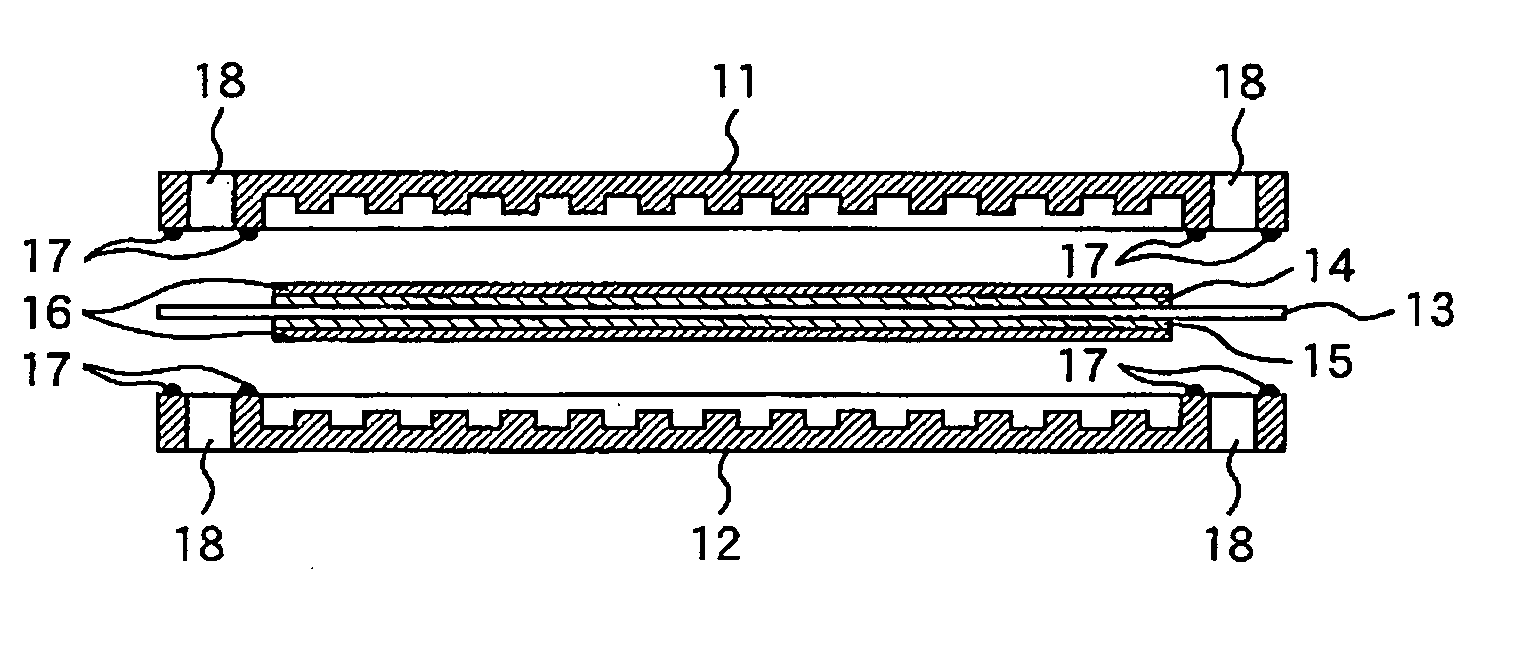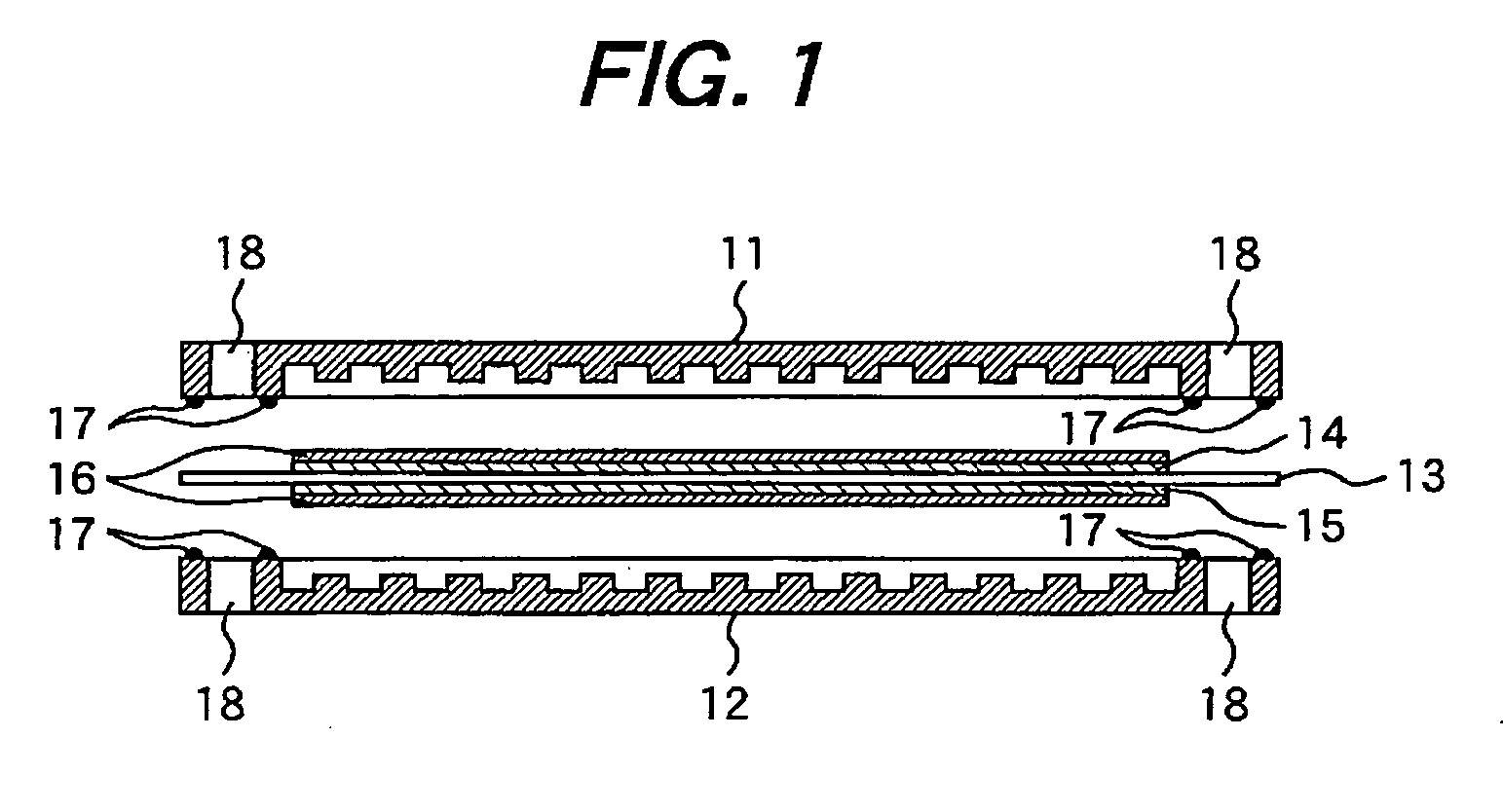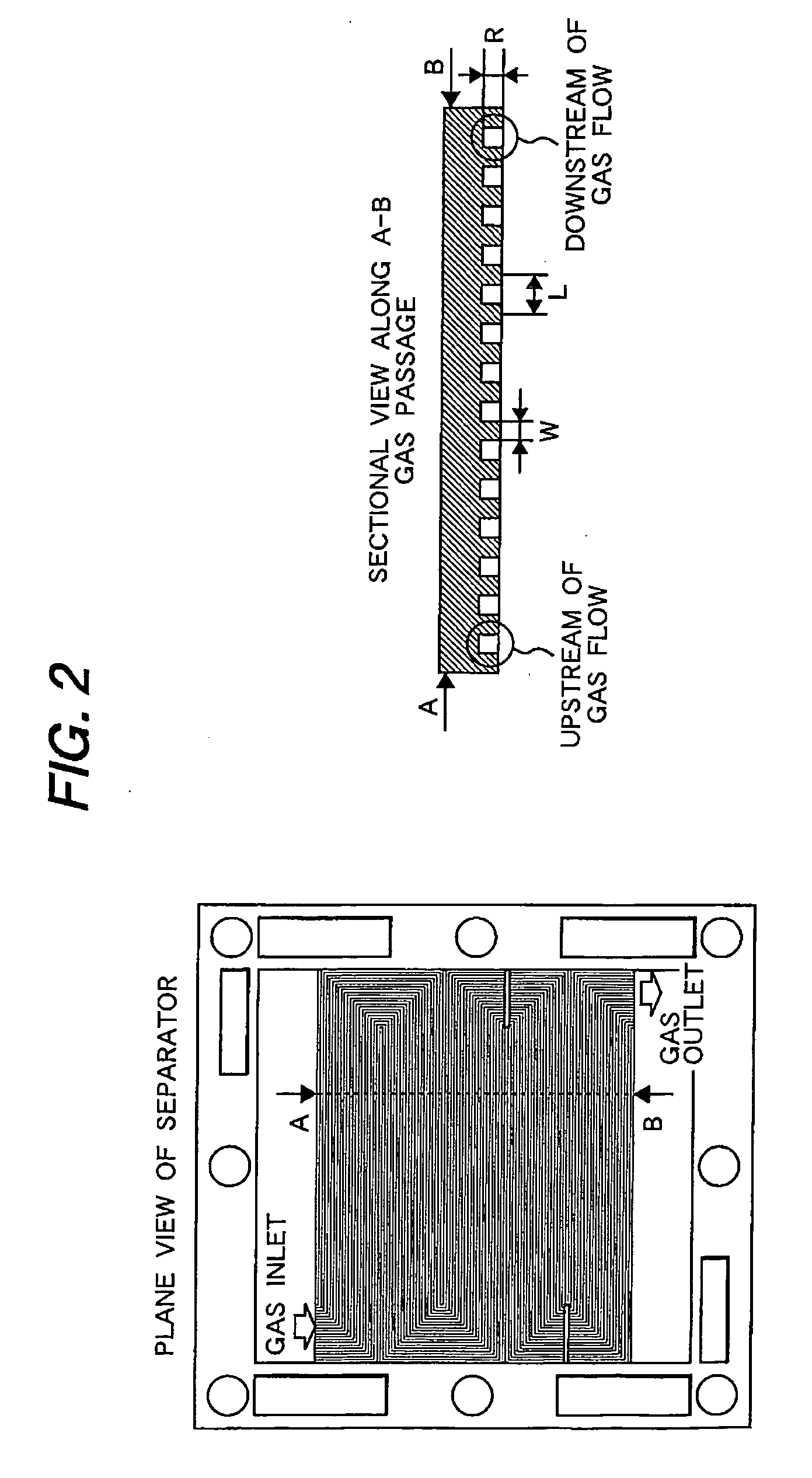Fuel cell
a fuel cell and polymer electrolyte technology, applied in the field of fuel cells, can solve the problems of increasing pressure loss in the passage, unresolved problems, and the conventional separator designed for comparatively low working temperature will pose serious problems, so as to reduce the mechanical stress of the mea, reduce the blower loss, and reduce the effect of pressure loss
- Summary
- Abstract
- Description
- Claims
- Application Information
AI Technical Summary
Benefits of technology
Problems solved by technology
Method used
Image
Examples
embodiment 1
[0050] This embodiment demonstrates an MEA capable of working at 100° C. or higher. The MEA has a composite electrolyte composed of S-PES (sulfonated polyether sulfone) as an organic polymer and zirconium oxide hydrate ZrO2·nH2O (as a moisture retention inorganic material) dispersed therein. The S-PES has an ion exchange capacity of 1.3 meq / g on dry basis. The zirconium oxide hydrate ZrO2·nH2O was derived from zirconium oxychloride ZrOCl2·8H2O as a precursor. A first varnish of ZrOCl2·8H2O (30 wt % in concentration) dissolved in dimethylsulfoxide was prepared. A second varnish of S-PES (30 wt % in concentration) dissolved in dimethylsulfoxide was prepared. The two vanishes were mixed with stirring for 2 hours by using a stirrer. The resulting varnish mixture was applied onto a glass plate by using an applicator, followed by vacuum drying at 80° C. for 1 hour and at 120° C. for 3 hours for evaporation of dimethylsulfoxide. The resulting film was peeled off from the glass plate and th...
embodiment 2
[0053] The same procedure as in Embodiment 1 was repeated to prepare the MEA suitable for working at 100° C. or higher.
[0054] The resulting MEA was combined with the separators according to the present invention to make a single cell for testing. The separators were placed on both sides of the MEA, with PTFE-treated water-repellent carbon paper interposed between the MEA and the separator. All the components were fastened with bolts. The cathode separator according to the present invention has a rib pitch that increases with going downstream along the gas flow. For example, the rib pitch increases from 2.0 mm at the inlet to 6.0 mm at the outlet. The cathode separator also has a rib height of 1.0 mm and a rib width of 1.0 mm. The anode separator has a rib height of 1.0 mm, a rib width of 1.0 mm, and a rib pitch of 2.0 mm.
[0055] Test for power generation was performed under the same conditions as in Embodiment 1. During testing, the pressure at the inlet of the cathode separator wa...
embodiment 3
[0059] The same procedure as in Embodiment 1 was repeated to prepare the MEA suitable for working at 100° C. or higher.
[0060] The resulting MEA was combined with the separators according to the present invention to make a single cell for testing. The separators were placed on both sides of the MEA, with PTFE-treated water-repellent carbon paper interposed between the MEA and the separator. All the components were fastened with bolts. The cathode separator according to the Embodiment has a uniform rib pitch of 6.0 mm (at both the inlet and outlet). The cathode separator also has a rib height of 1.0 mm and a rib width of 1.0 mm. The anode separator has a uniform rib pitch of 2.0 mm at both the inlet and the outlet. It also has a rib height of 1.0 mm and a rib pitch of 1.0 mm.
[0061] The single cell was tested for life by measuring the variation in voltage with time, with the current density kept at 200 mA / cm2.
PUM
 Login to View More
Login to View More Abstract
Description
Claims
Application Information
 Login to View More
Login to View More - R&D
- Intellectual Property
- Life Sciences
- Materials
- Tech Scout
- Unparalleled Data Quality
- Higher Quality Content
- 60% Fewer Hallucinations
Browse by: Latest US Patents, China's latest patents, Technical Efficacy Thesaurus, Application Domain, Technology Topic, Popular Technical Reports.
© 2025 PatSnap. All rights reserved.Legal|Privacy policy|Modern Slavery Act Transparency Statement|Sitemap|About US| Contact US: help@patsnap.com



